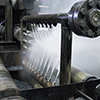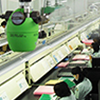Humidification Business
Our non-wetting “Dry Fog”
humidification system provides a suitable humidity environment
for all types of industries.
Overview of the business
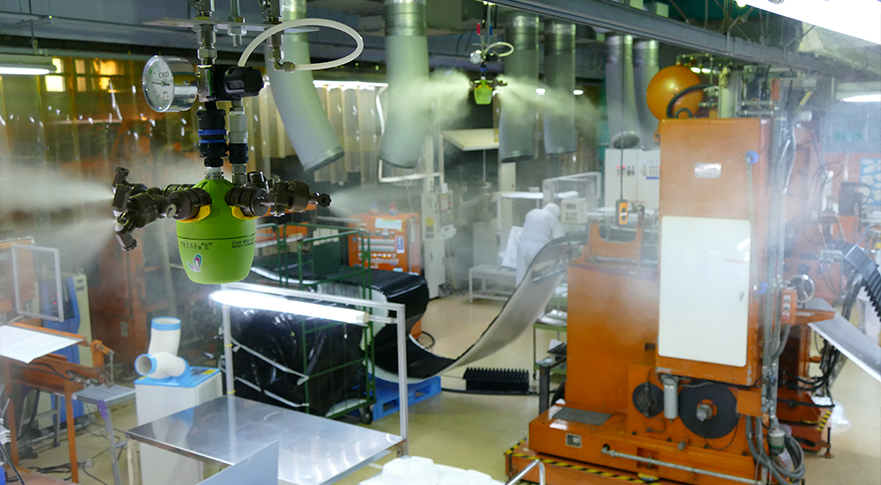
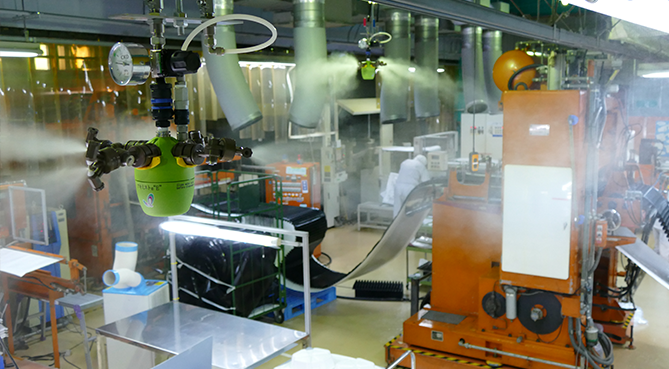
Our humidification business started in 1979 with the invention of “”Dry Fog””, which is not wet to the touch. The spray nozzle that creates the dry, non-wetting fog was initially developed for moisture conditioning in the textile industry, but it evolved into use as a humidifier for large spaces. Then, demand for Dry Fog increased as customers wanted to humidify entire plants, and demand also increased across unrelated industries. In 1985, we created one of the world’s first divisions dedicated to humidification.
At manufacturing sites, the humidity is closely related to product manufacturing yield and quality. The goal of our humidification business is to humidify or maintain humidity at the optimal level for these sites, establishing an environment where trouble will not occur. There is a wide variety of industries and applications that require humidity. Suitable humidity control has become common sense across all industries, but it is a notably important element in industries such as printing, paper containers, vehicles, electronics, plastics, textiles, and food products.
Our strengths are our one-of-a-kind dry fog and our decades of experience and knowhow. When we initially created Dry Fog, we defined it as a fog with an average droplet diameter of 10 μm or less without including large droplets. How can this fog be used to maximize the user experience? Through a series of on-site surveys, design, installation, verification, and maintenance, we are pursuing the limits of Dry Fog’s potential.
Through the use of the Dry Fog humidification system at sites in order to tackle the challenges of users, we have learned the product’s strengths and weaknesses and the core problems faced by users. Because we provided feedback this experience and knowhow to users and applied it to product development, Dry Fog humidification system evolved to more highly advanced, easy-to-use, and convenient method for humidification, currently and broadly used in 88 countries across the world.
The relationship between Dry Fog and SDGs
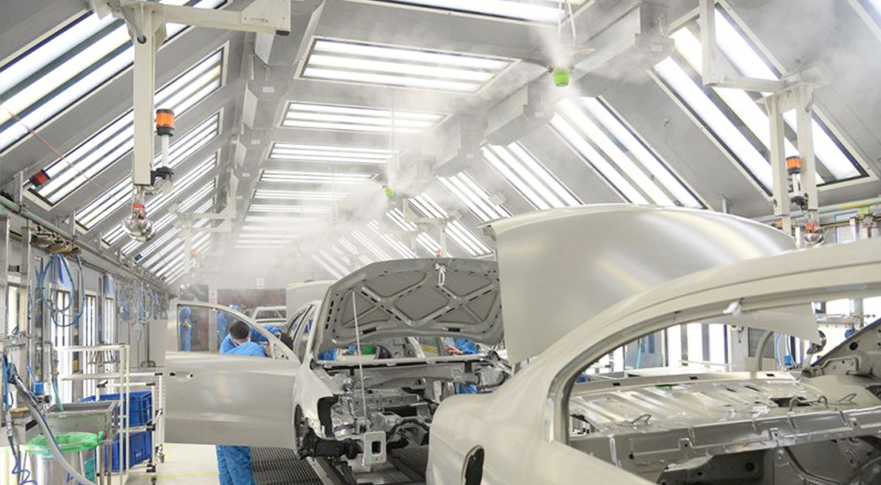
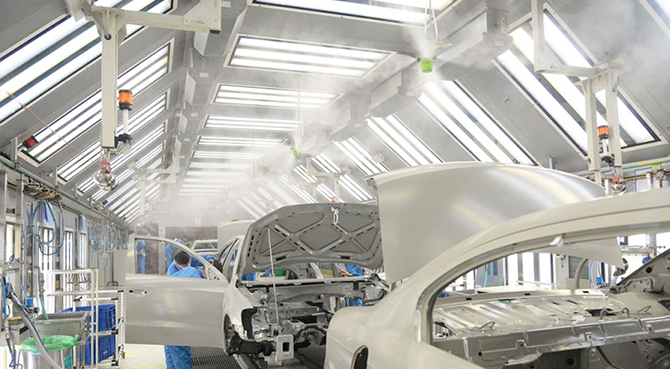
You might be wondering what the relationship is between these two things, but they are closely related. In terms of achieving SDGs for urgent problems such as global warming and energy problems, even before the adoption of the Kyoto Protocol in 1997, we were looking at humidification as an approach to for these issues.
In the industrial world, mainly steam humidification using fuel oil as the energy source has been used. This consumes fossil fuels and emits CO2 and exhaust heat. Additionally, this method of humidification is burdensome on the environment in terms of its energy efficiency.
By comparison, Dry Fog Humidification is a water spray method that vaporizes water. It does not use fossil fuels, and the atomized water dissolves directly into the air, increasing the humidity. Therefore, without emitting CO2 and exhaust heat, even enabling localized humidification at specific points where needed, this humidification method is far less burdensome on the natural environment. Without the need to use fuel oil, running costs are also greatly decreased.
Since humidity control is vital for the industrial world, it is very important to consider how to minimize environmental impact with humidification. Utilizing our Dry Fog not only improves product quality and reduce defect rate, but also enables reduction in manufacturing costs and environmental impacts. This may seem too good to be true, but its performance is proven. It is possible to achieve both reduced environmental impacts and improved humidity environments. Contact IKEUCHI, the Fog Engineers, no matter how big or small your challenges are.


